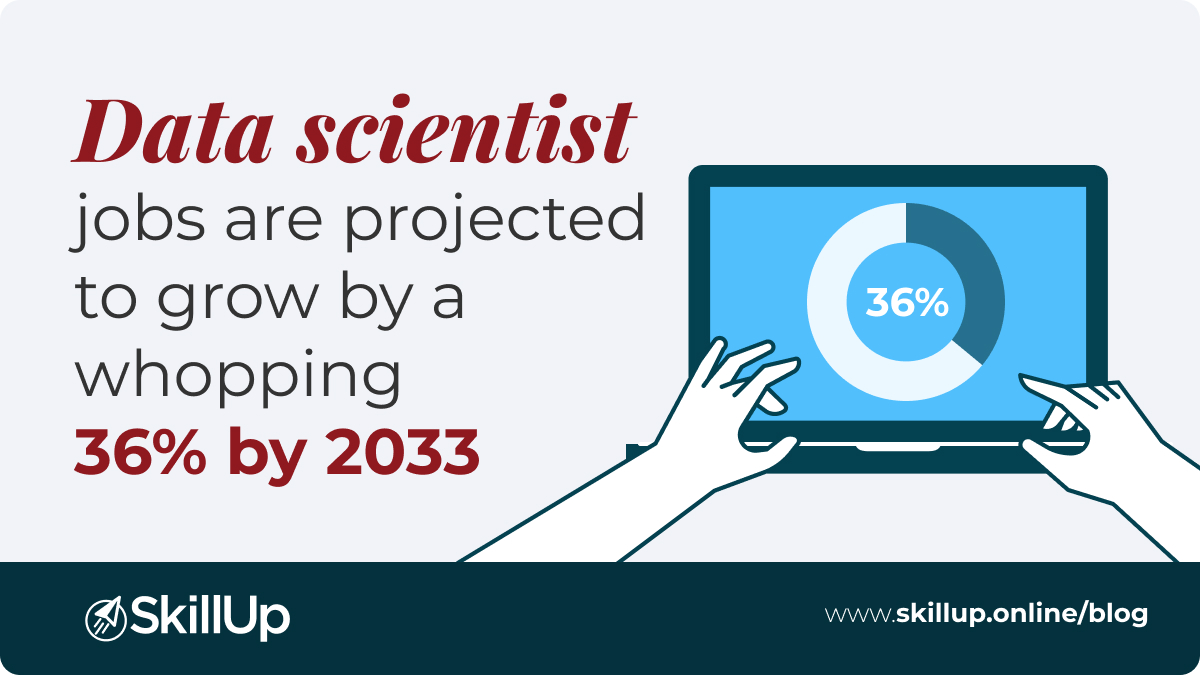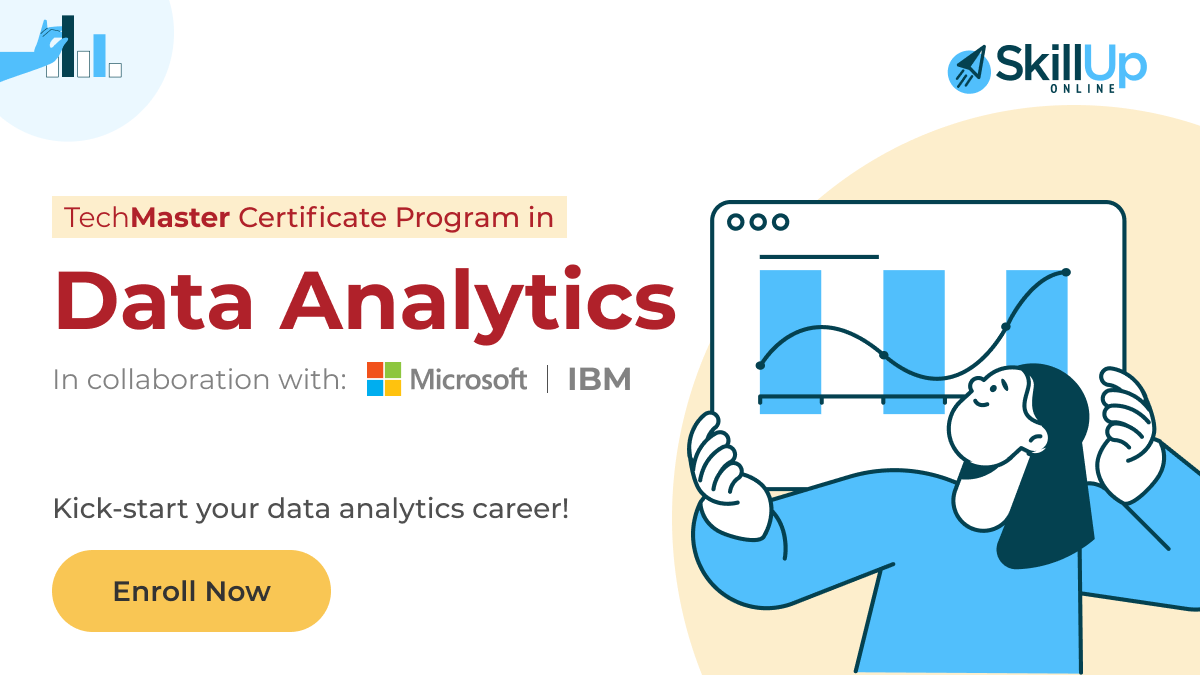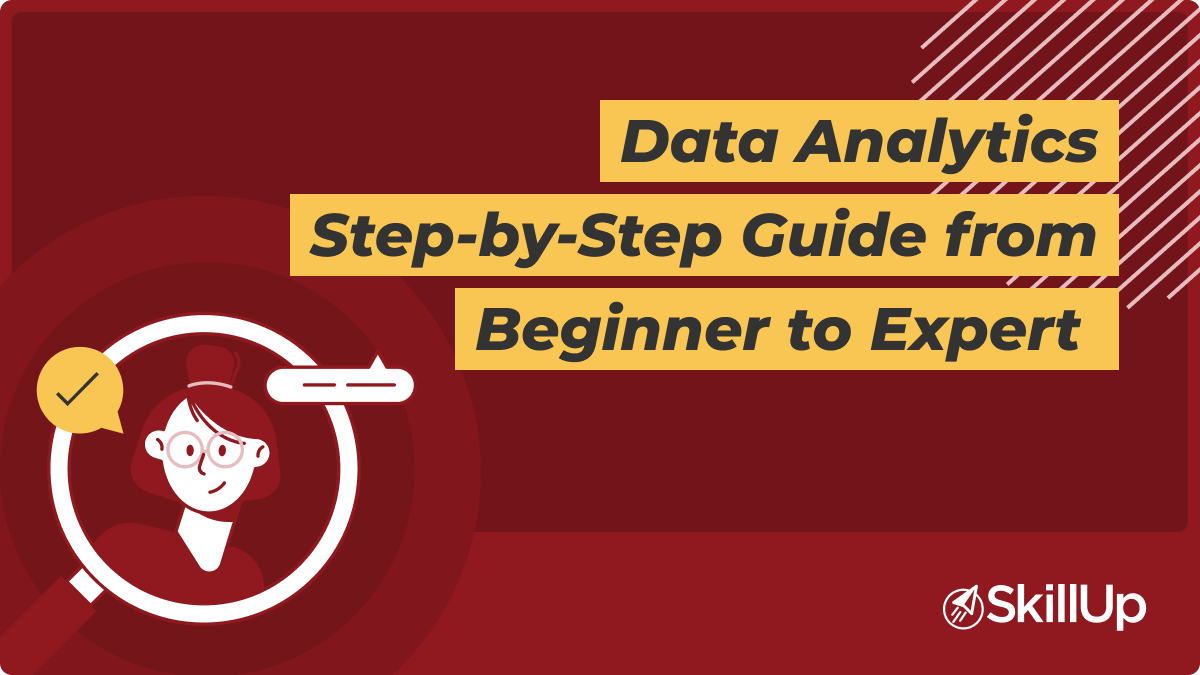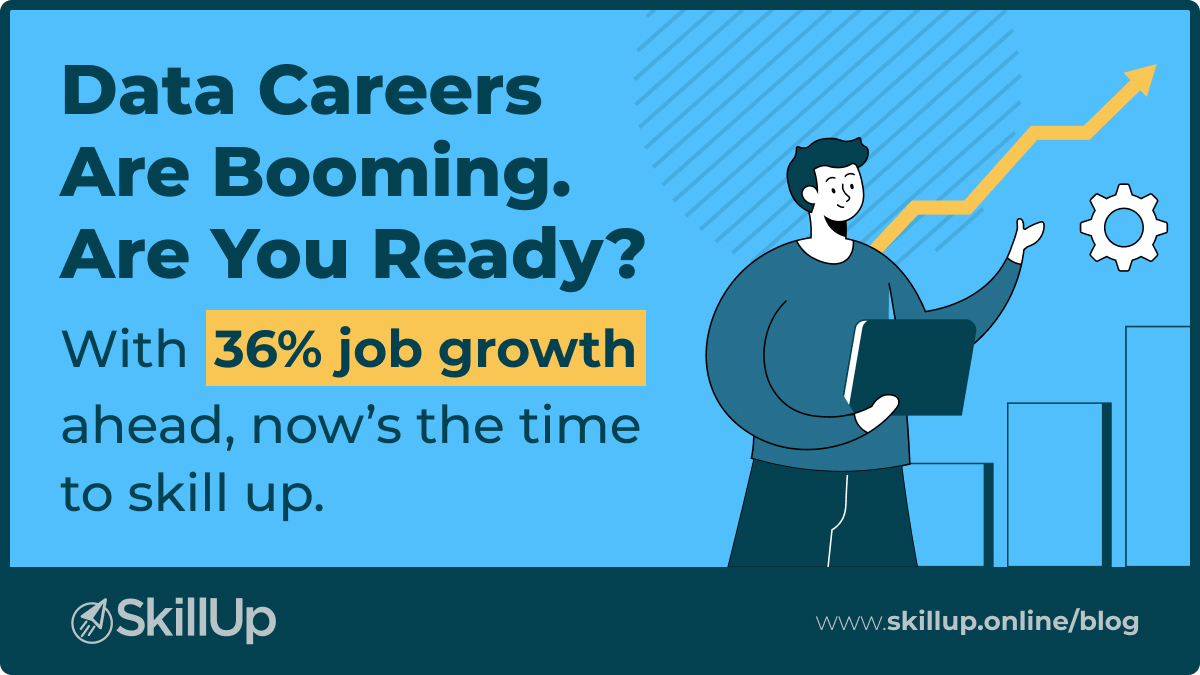If you’re thinking about a career that’s future-proof, look no further than data analytics. In fact, the U.S. Bureau of Labor Statistics reports that data-related job roles are expected to grow 36% by 2033, making it one of the fastest-growing job categories today. Businesses are relying more on data to shape everything from product launches to investment strategies. This means that the ability to turn numbers into meaningful insights has never been more valuable than right now!
In this blog, we’ll explore the most in-demand data analyst job roles, the skills employers are actively seeking, and how you can start preparing today.
What Does a Data Analyst Do Today and How Is It Evolving?
At its core, the job of a data analyst is about making sense of numbers and translating them into actionable business insights. Analysts collect, clean, and examine data to spot trends, solve problems, and help companies make smarter decisions.
However, today’s analysts are expected to go beyond standard reporting. With automation and AI tools becoming common, businesses now expect analysts to:
- Forecast future trends and risks through predictive analytics
- Collaborate directly with business teams to align insights with strategy
- Tailor data storytelling to different audiences
- Work hands-on with tools like SQL, Python, Excel, and Power BI for deeper insights
The focus is shifting toward strategic thinking, storytelling with data, and direct impact on business goals.
Top In-Demand Data Analyst Job Roles
As the role of data analysts expands, specialized paths are emerging across industries. Here are some of the top data analyst job roles you should know about:
Business data analyst
Supports leadership in making data-backed decisions that improve processes, customer experiences, and profitability.
Marketing data analyst
Tracks customer behavior and campaign performance, helping brands optimize marketing strategies and maximize returns.
Financial data analyst
Interprets financial data to model revenue, forecast risks, and guide investment planning.
Healthcare data analyst
Works with clinical, patient, and operational data to drive improvements in patient outcomes and healthcare efficiency.
Operations analyst
Focuses on streamlining logistics, supply chains, and internal workflows using data insights.
Product analyst
Analyzes user behavior, feature engagement, and product performance to inform future product design and improvements.
Most of these roles require a strong command of SQL, Python, Tableau/Power BI, and a deep understanding of business processes. Certifications and real-world project experience give candidates a clear edge.
Core Skills and Tools Employers Are Looking For
Success in today’s data analyst landscape comes from mastering both technical tools and human-centered skills.
Technical skills:
Core expectations include SQL for managing databases, Python for advanced analysis, Excel for modeling, and visualization tools like Tableau or Power BI. A solid grounding in data cleaning and statistical methods is essential for accurate insights.
Soft skills:
The ability to problem-solve, think critically, and communicate insights in a way that drives business decisions is highly valued. Employers want analysts who can see beyond the numbers and frame findings in the bigger business picture.
Hands-on learning:
Theory is important, but employers increasingly want proof that you can apply what you know. Candidates with portfolios featuring real-world dashboards, case studies, or simulations often stand out far more than those with only certifications.
To get a deeper look at what’s shaping hiring decisions today, explore SkillUp’s blog, Top 6 Data Analytics Skills Every Analyst Needs. It covers why skills like advanced Excel, data visualization, and business-focused communication have moved from “nice-to-have” to “must-have” for serious analysts.
How to Prepare for These Roles: Learning Pathways That Work
Breaking into or advancing in data analytics means choosing the right learning path—one that builds not just technical expertise but business fluency.
Structured Learning:
Programs that blend hands-on practice with real-world case studies help learners move from passive understanding to confident application.
SkillUp’s TechMaster Certificate Program in Data Analytics:
If you’re looking for a place to start, the SkillUp’s TechMaster Certificate Program in Data Analytics is designed to help you build practical, job-ready skills. It offers:
- Curated courses aligned with current industry needs
- Hands-on projects to practice what you learn
- Mentor support for navigating complex concepts
- Flexibility to fit your schedule, whether you are working or switching careers
Other Options:
Courses on platforms like Coursera and edX are also valuable, but the key is ensuring any program you choose emphasizes real-world problem-solving, not just theory.
Choosing the right program can mean the difference between just learning tools and truly being ready to use them in high-stakes business environments.
Get Ready for a Data-Led Future
The data economy is not slowing down. Analysts who combine technical expertise with strategic insight are becoming key players in industries from finance to healthcare to tech.
Investing in your skills today especially through hands-on, industry-aligned learning can open doors to roles that not only pay well but offer long-term growth potential.
If you’re ready to take the first step, then SkillUp’s TechMaster Certificate Program in Data Analytics could be the starting point for a rewarding career where data-driven thinking leads the way.
SkillUp Online






